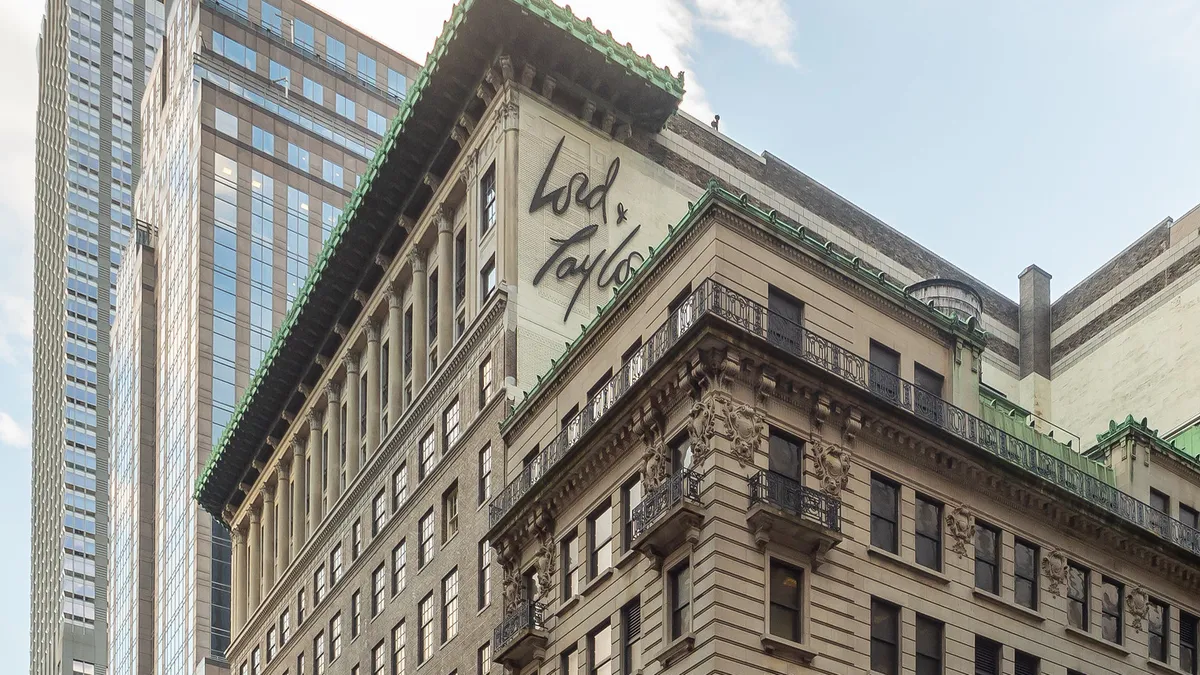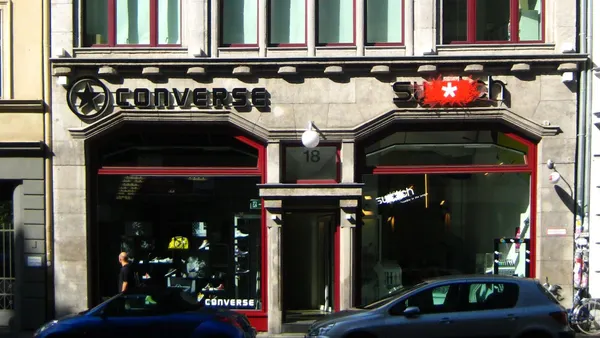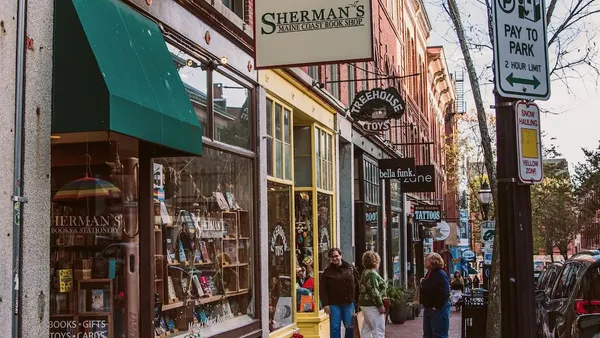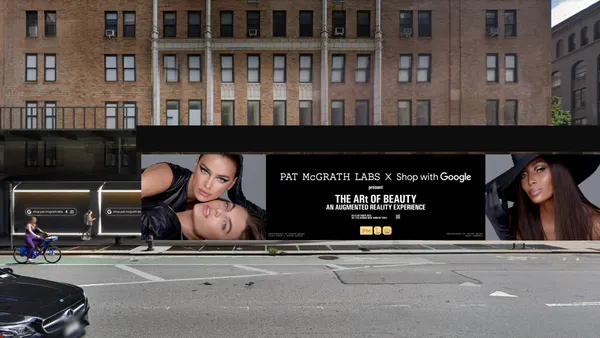With Lord & Taylor adrift once again, in search of a buyer that might be willing to turn back years of neglect, it's easy to forget that the department store was a cutting edge retailer for well more than a century.
It's also easy to blame Lord & Taylor's current predicament — in bankruptcy barely a year after being acquired by a small apparel rental e-retailer — on the well-documented challenges in the department store sector, the apparel segment and retail more widely. But in its 194 years, Lord & Taylor weathered all sorts of storms: pandemics, economic depressions, world wars, social upheaval. For years it maintained a loyal following, which came to be mostly middle class women who depended on its store associates to find the pretty dresses that suited them, and that they could afford.
The retailer came into its own in the mid-20th century, a good time for the American middle class, which has declined ever since as income inequality has steadily worsened. Much of the credit goes to Dorothy Shaver, a chief merchandiser who eventually led the company and shaped not just its logo but also its support of designers in the U.S. whose talents were ignored by the Parisian fashion elite.
The 21st century has been a different story for Lord & Taylor, forsaken as it was by owner Hudson's Bay Co. The department store conglomerate has seemed more focused on its real estate holdings than on the storied retailers that sit upon them, perhaps with the exception of luxury department store Saks Fifth Avenue.
Lord & Taylor once did everything with style, even its expansion into the suburbs, where many of its stores were a testament to mid-century flair in both architecture and interior design, in contrast to the many big-box mall anchors put up by its rivals. But it was its people, its buyers, merchandisers and associates, who were arguably most responsible for that reputation.
"Who is saying, 'Help me plan your wardrobe or your trousseau'?" Anika Sharma, professor at New York University's Stern School of Business, said in an interview last year. "This is why brands like Stitch Fix are doing well. I would expect something like that from a place like Lord & Taylor, but the store is not doing well because they've taken those people out. They're a depository of other brands, but they don't stand for something."
Two centuries at Lord & Taylor
-
1826
English immigrant Samuel Lord opens a dry goods store in New York City. He later invites his wife's cousin George Washington Taylor into the business, which they dubbed "Lord & Taylor."
-
1860
The retailer opens its third location at Grand Street and Broadway after opening a second location at Grand and Chrystie Streets seven years earlier.
-
1863
Lord & Taylor curates a special department for mourning attire for Civil War widows.
-
1872
The main store moves to a new cast iron-frame building at 20th Street and Broadway that has a steam-powered elevator. The shopping district (today known as the Flatiron District) becomes known as "Ladies Mile," as department stores there like Lord & Taylor represent the first places deemed proper enough for women to shop unchaperoned in the Victorian Era — and new freedom for female consumers.
-
1914
Lord & Taylor moves into the Italianate flagship on Fifth Avenue between 38th and 39th Streets.
-
1916
Lord & Taylor is a founding member of Associated Dry Goods Co., a group of independent department stores.
-
1924
Dorothy Shaver joins Lord & Taylor and begins a series of groundbreaking initiatives. That includes a suburban expansion employing cutting-edge modern architecture and interior design, and the development of the first "shop-in-shop" departments, like those for teenagers, petite women and, later, pets. She also forged the retailer's distinctive handwritten-signature logo.
-
1932
To promote fashion designers in the United States, Shaver devises a program she calls "The American Look," including creative and fashion awards, which historians say helped move the world's fashion capital from Paris to New York City.
-
1938
During an unseasonably warm November, Lord & Taylor replaces merchandise in window displays with sound and "wind" that blows bleached cornflakes to simulate a blizzard, a controversial move that launches a longstanding tradition of animated window displays at the holidays.
-
1945
Shaver becomes president of Lord & Taylor, the first woman to lead a major retailer.
-
1952
Lord & Taylor introduces a personal styling service. The retailer gains an enduring reputation for its stylish dresses, which are affordable for the middle class.
-
1986
May Department Stores, the third-largest department store conglomerate in the U.S., announces a $2.7 billion deal to acquire Associated Dry Goods (including Lord & Taylor, its most prominent banner) in a move that further consolidates the industry and moves it on par with rival Federated Department Stores.
-
2005
Led by Terry Lundgren, Federated acquires May Department Stores, including Lord & Taylor, for $11 billion (or $17 billion including the assumption of debt).
-
2006
Federated sells Lord & Taylor to real estate investment firm NRDC Equity Partners, led by real estate mogul Richard Baker, for $1.2 billion in cash.
-
2007
Federated Department Stores changes its name to Macy's. New York's Landmarks Preservation Commission designates Lord & Taylor's Fifth Avenue store a landmark, stating that "Starrett & Van Vleck's 1913-14 building for Lord & Taylor marks a turning point in retail design" and calling out its "dignified, Italian Renaissance Revival store with its prominent chamfered corner, deep copper cornice, austere limestone base, gray facebrick center section and two-story colonnade."
-
2008
NRDC buys Canadian department store Hudson's Bay Co. for an undisclosed sum, and consolidates its ownership of several companies, including Lord & Taylor, under a holding company called the Hudson's Bay Trading Company. The company says that Lord & Taylor, "will be in a position to launch 10-15 stores throughout Canada."
-
2013
Hudson's Bay Co. buys U.S. luxury department store Saks Fifth Avenue for $2.9 billion, including debt.
-
2017
Lord & Taylor opens a digital storefront on Walmart.com. Retail analyst Howard Davidowitz calls it, "Crazy. Loony. Madness."
-
2018
Hudson's Bay Co. executives won't confirm whether they are looking into options for Lord & Taylor. The store displays its last-ever animated holiday window displays, which are joined by "everything must go" signs.
-
2019
In February, Hudson's Bay closes on the sale of Lord & Taylor's Italianate Fifth Avenue flagship to WeWork for $850 million. In May, HBC confirms that a sale is among the strategic options it is pursuing for Lord & Taylor. In November, HBC sells the chain to apparel rental site Le Tote for $75 million and a secured promissory note for $33.2 million payable in cash after two years. Le Tote takes over 38 of Lord & Taylor's 45 stores. Some analysts are skeptical, but others see the Le Tote purchase as a potential lifeline for Lord & Taylor, especially if it brings in new, younger customers.
-
2020
The COVID-19 pandemic disrupts Le Tote's plans, forcing layoffs there and at Lord & Taylor in April. In August, Le Tote files for bankruptcy, with plans to permanently close 19 of Lord & Taylor's 38 locations. Later that month, Amazon announces it has purchased the Fifth Avenue flagship for an undisclosed amount. A few days later Le Tote adds an additional five locations to the retailer's closures, and the following week announces that, without interest from a buyer, all 38 stores will be liquidating. Despite that, Le Tote says it's still searching for a buyer for Lord & Taylor.
This story has been updated to reflect Le Tote's decision to liquidate all Lord & Taylor stores.












